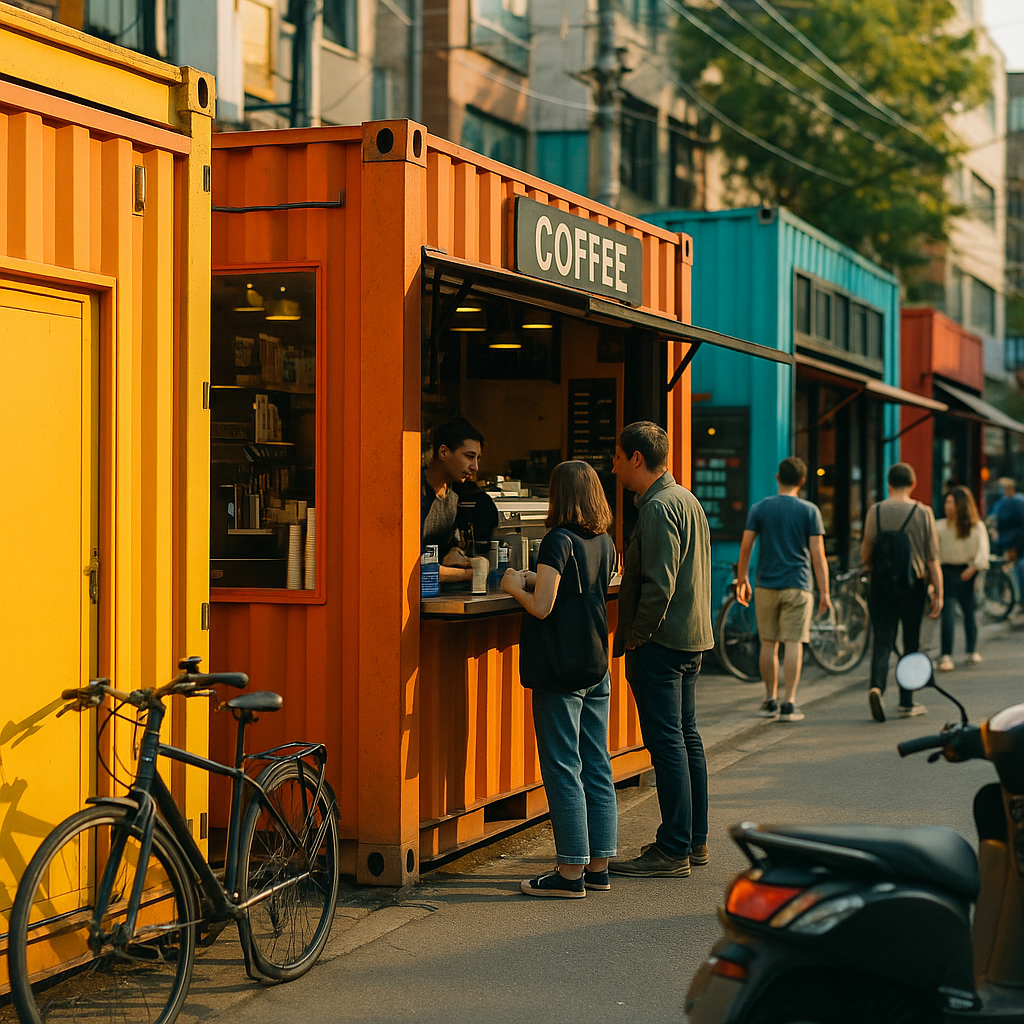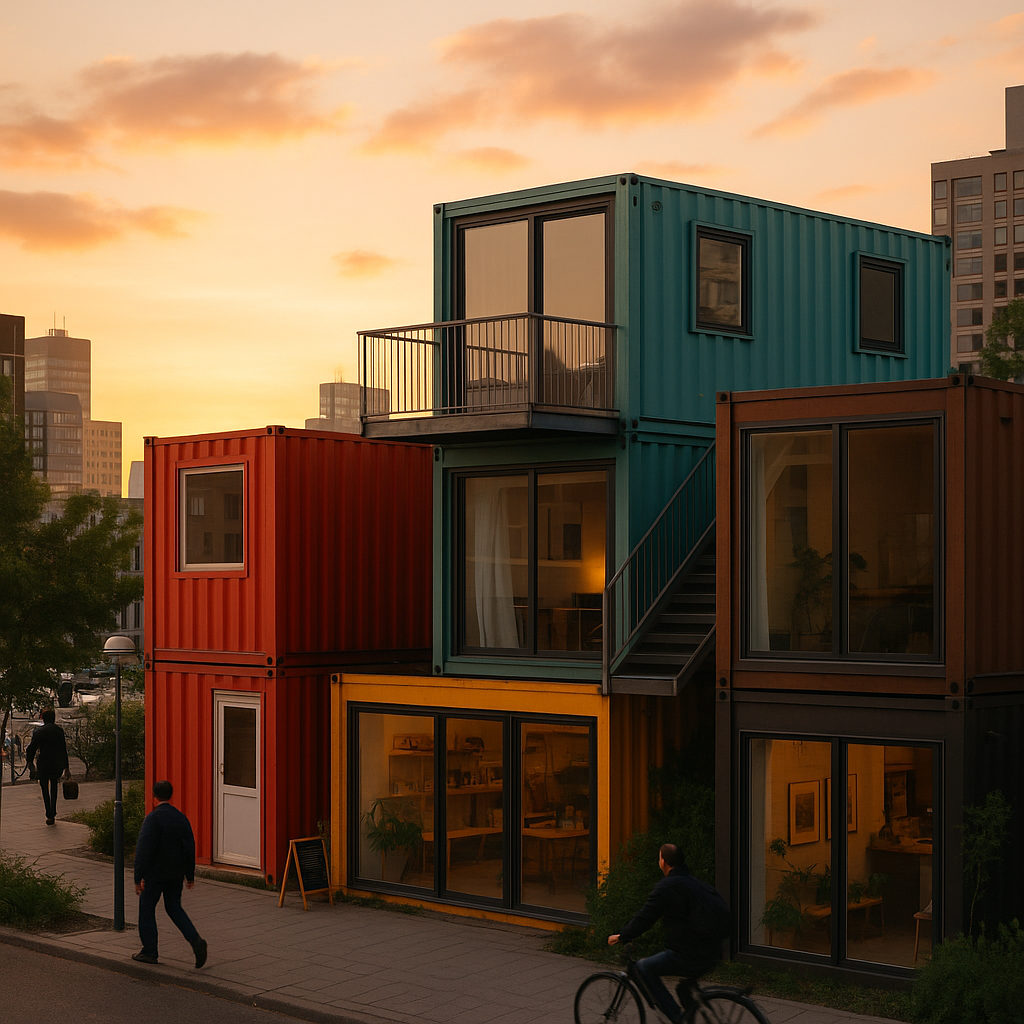5901 Botham Jean Blvd, Dallas, TX 75215
What Are Creative Ways to Repurpose Old Shipping Containers?
July 31, 2025Around the world, millions of shipping containers remain unused after serving their primary purpose. These steel boxes, designed to withstand harsh ocean conditions, are finding remarkable second lives through creative repurposing. Transforming these industrial relics into functional spaces offers a sustainable solution to urban development challenges.
Shipping containers make excellent building blocks for residential projects. Architects convert them into stylish homes with modern amenities, creating everything from affordable tiny houses to luxury multi-container dwellings. Their structural integrity allows for stacking and combining multiple units to create larger living spaces with unique architectural appeal.
Businesses are also embracing container conversions for commercial uses. Pop-up shops enable retailers to establish temporary storefronts with minimal investment. Restaurants and cafés benefit from the compact, mobile nature of containers, with major brands like Starbucks launching container coffee shops as part of their sustainability initiatives. The flexibility of container architecture makes these spaces ideal for offices, studios, and workshops, which can be easily relocated as needed.
How Can Shipping Containers Be Used for Housing and Living Spaces?
Shipping containers have transformed the housing industry by offering versatile, durable structures that can be converted into comfortable living spaces. Originally designed for transporting goods across oceans, these steel boxes now serve as building blocks for innovative housing solutions worldwide. Their standardized dimensions and robust construction make them ideal for architectural repurposing.
Container homes range from simple single-unit micro-homes to complex multi-container structures that offer the size and comfort of traditional houses. The modular nature of these containers allows for creative configurations where units can be stacked, joined side-by-side, or arranged in unique patterns to create distinctive living environments.
Versatile Applications for Container Housing
The adaptability of shipping containers makes them suitable for various housing applications. Developers and homeowners are using these structures to create:
- Compact micro-homes perfect for minimalist living or first-time homeowners
- Spacious modular houses created by connecting multiple containers
- Affordable student housing complexes on or near university campuses
- Vacation homes and weekend retreats in remote locations
- Emergency housing solutions following natural disasters
- Multi-family apartment buildings with stacked container configurations
- Accessory dwelling units (ADUs) for rental income or extended family
In places like Houston, Texas, shipping container homes have gained popularity as an alternative to traditional housing. These homes combine industrial aesthetics with modern comforts, creating unique living spaces that stand out in residential neighborhoods.
Customization and Modern Amenities
Despite their industrial origins, container homes can include all the comforts of conventional houses. Customization options are virtually limitless, with containers serving as blank canvases for creative design. Common modifications include:
The durable COR-TEN steel construction of shipping containers creates stable, secure environments that can withstand harsh weather conditions. Containers can be fully customized with proper insulation to regulate temperature, plumbing systems for modern bathrooms and kitchens, and electrical wiring to support all household needs.
Large sections of container walls can be replaced with windows and glass doors, transforming the boxy structures into light-filled spaces. Interior walls can be finished with various materials to create warm, inviting environments that bear little resemblance to the container’s original industrial purpose.
Eco-Friendly Benefits of Container Housing
Container homes align well with sustainable living principles. By repurposing shipping containers that might otherwise remain unused, these projects give new life to existing materials. Additional environmental benefits include:
- Reduced construction waste compared to traditional building methods
- Smaller physical footprint, preserving more natural landscape
- Excellent opportunities for installing renewable energy systems like solar panels
- Potential for rainwater collection systems for garden irrigation
- Energy-efficient design when properly insulated
- Lower transportation carbon footprint when using locally sourced containers
Projects like the Caterpillar House in Santiago, Chile demonstrate how container homes can embrace eco-friendly principles. This innovative residence uses passive cooling techniques and strategic orientation to minimize energy consumption while maximizing comfort.
Cost Considerations and Construction Speed
Container homes often provide cost advantages over traditional construction, though prices can vary based on design complexity, size, and customization level. The building process typically progresses faster than conventional construction since the main structural elements arrive pre-fabricated.
Modular container homes can be partially assembled off-site, reducing on-site construction time and neighborhood disruption. This prefabrication approach allows for better quality control and helps homeowners move into their new spaces more quickly.
[[artifact_table]] Comparison of Container Home Types and Approximate Costs [[/artifact_table]]The accessibility of shipping container homes has made them popular among DIY enthusiasts, though professional help is recommended for structural modifications, foundation work, and compliance with local building codes. With proper planning and design, these repurposed steel boxes can transform into beautiful, functional homes that challenge traditional notions of what a house should be.
What Commercial Applications Exist for Old Shipping Containers?

Old shipping containers have become valuable assets for businesses seeking flexible, durable, and cost-effective solutions. Their sturdy steel construction and standardized dimensions provide an ideal foundation for various commercial applications. From retail to office space, these repurposed structures are transforming how businesses approach physical locations.
Retail and Hospitality Ventures
Pop-up shops are one of the most visible commercial applications for shipping containers. These temporary retail spaces allow brands to create seasonal locations or test new markets without committing to long-term leases. The distinctive industrial aesthetic of container structures often attracts curious customers, potentially increasing foot traffic compared to traditional storefronts.
The food and beverage industry has embraced shipping containers with particular enthusiasm. Container cafes and restaurants provide a unique dining experience while offering significant cost advantages. Starbucks, for example, has invested in over 40 stores made from shipping containers as part of its sustainability initiatives. These container establishments can be fully customized with outdoor seating, vibrant décor, and all necessary kitchen equipment.
Office and Workspace Solutions
Shipping containers make excellent modular office buildings for businesses of all sizes. Their strength allows for stacking and combining multiple units to create larger workspace environments. Containers can be easily modified with windows, doors, insulation, and climate control systems to create comfortable working spaces.
For construction sites and temporary projects, shipping container offices provide secure, ground-level workspace that can be relocated as needed. These modified containers eliminate the need for steps or ramps, simplifying compliance with regulations while protecting valuable equipment and documents. When equipped with electrical wiring and plumbing, they become fully functional workspaces even in remote locations.
Specialized Commercial Applications
Storage remains a primary commercial use for shipping containers. Businesses use them to store inventory, equipment, and seasonal items securely. Their weather-resistant construction protects contents from harsh environmental conditions, while their mobility allows for strategic placement wherever storage is needed most.
Mobile laboratories housed in shipping containers serve both educational and medical purposes. During the COVID-19 pandemic, container structures were widely deployed as testing centers and vaccination sites in shopping center and pharmacy parking lots. Their controlled environment and mobility made them ideal for rapid response to public health needs.
Event infrastructure represents another growing application, with shipping containers serving as ticket offices for sports venues, portable toilets for outdoor events, and temporary bar setups for festivals. These specialized units help streamline operations while enhancing the visitor experience.
Business Benefits of Container Structures
The business case for container structures extends beyond their novelty. The accelerated construction timeline compared to traditional building methods allows businesses to begin operations sooner. Banking facilities, convenience stores, automobile dealerships, and home sales centers have all benefited from this expedited process.
Mobility offers another significant advantage. If a location proves unsuccessful, businesses can simply relocate their container structure rather than abandon a permanent building. This flexibility reduces risk for startups and seasonal businesses testing new concepts or markets.
Container structures also provide substantial sustainability benefits. Repurposing shipping containers reduces demand for new building materials while preventing large amounts of steel from entering landfills. This eco-friendly approach can enhance brand reputation while potentially qualifying for green building certifications that attract environmentally conscious customers.
While container modifications require investment, their durability and long lifespan offer excellent value. These structures withstand extreme weather conditions, resist rodent intrusion, and provide superior security against theft and vandalism—critical considerations for protecting business assets.
[[artifact_table]] Cost comparison between container structures and traditional construction for commercial applications [[/artifact_table]]From pop-up retail to specialized workspaces, shipping containers offer businesses flexible, durable solutions that combine practicality with distinctive design. Their adaptability to various commercial needs continues to expand as innovative businesses discover new applications for these versatile structures.
How Are Shipping Containers Used for Urban Infrastructure and Community Projects?
Beyond residential and commercial uses, shipping containers are increasingly transformed into essential urban infrastructure and innovative community spaces. Their modularity, durability, and affordability make them an attractive solution for cities and organizations seeking to address various urban challenges swiftly and flexibly.
Affordable Community Facilities
Shipping containers are repurposed into libraries, community centers, classrooms, and clinics in both urban and underserved areas. Their rapid deployability is ideal for addressing gaps in public infrastructure—pop-up libraries can quickly introduce books and educational programs to neighborhoods lacking traditional facilities, while container classrooms and clinics offer immediate relief after natural disasters or during times of rapid population growth.
Public Amenities and Recreation
Municipalities embrace container architecture for public amenities such as restrooms, concession stands, and information kiosks in parks and recreational areas. Containers also serve as secure storage for sports equipment, maintenance tools, and event supplies. Their weather resistance and mobility allow cities to reposition these structures based on seasonal demand or community events.
Innovative Urban Projects
Cities worldwide are launching creative projects that transform containers into art galleries, performance stages, and makerspaces, helping foster community engagement and local entrepreneurship. Temporary container installations have revitalized vacant lots and underutilized urban spaces, providing pop-up retail and cultural venues that activate neighborhoods and support small businesses.
As the need for flexible, cost-effective, and sustainable urban solutions grows, shipping containers are proving to be a valuable tool in the modern city’s toolkit. Their continued adoption for community-oriented projects demonstrates their lasting value beyond traditional building and business uses.
Conclusion: The Lasting Impact of Container Repurposing

Repurposing shipping containers has grown from a niche trend into a practical solution for modern living, business, and community development. Their adaptability enables sustainable homes, pop-up shops, and essential public infrastructure, demonstrating how these formerly single-use steel boxes can significantly address environmental and urban challenges. As architects, entrepreneurs, and municipalities discover new applications, shipping containers are poised to remain integral to the circular economy and sustainable design movement. Call Okon Recycling at 214-717-4083 to recycle your container and other metals.
